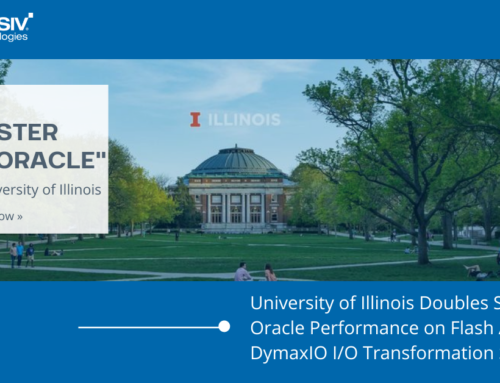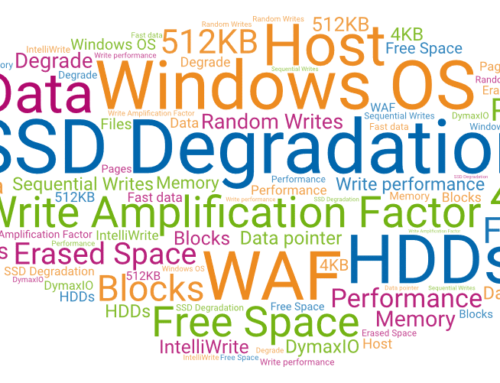“We didn’t know how much of our SQL performance was being dampened by the nasty ‘I/O blender’ effect…..”
As it turned out, it was HALF.
That’s right. Their systems were processing HALF as many MB/sec than they should due to the noise of all their VM workloads meeting and mixing at the point of the hypervisor. The first thing the “I/O blender” effect does is tax throughput, so your application performance becomes far more dependent on storage IOPS than it needs to be.
So what is the “I/O blender” effect and how is it taxing application performance?
The “I/O blender” effect is a phenomena specific to a virtual server environment where the I/O streams from disparate VMs are “funneled” together at the point of the hypervisor before sending out to storage a very random I/O stream that penalizes overall application performance.
Every organization that has virtualized has experienced this pain. They virtualized their applications only to discover mounting I/O pressure on the backend storage infrastructure. This was the unintended consequence of virtualization. Organizations save costs on the compute layer via virtualization only to trade those savings to backend storage where a forklift upgrade is necessary to handle the new random I/O demand.
In the case of I.B.I.S., Inc., their IT Director wanted to look into this problem a little further to see what could be done before reactively buying more storage hardware for improved performance.
“We wanted to try V-locity® I/O reduction software first to see if it could tackle the root cause problem as advertised at the VM level where I/O originates,” said Kevin Schmidt, IT Director.
As much as IT departments lack monitoring tools that show exactly how much performance is dampened by the “I/O blender” effect, V-locity comes with an embedded benchmark to give a before/after picture of I/O reduction and demonstrate how much performance is improved by combatting this problem at the Windows operating system layer.
As it turned out, I.B.I.S., Inc.’s heaviest SQL workloads saw a 120% improvement in data throughput. Before V-locity, it took 82,000 I/Os to process 1GB of data. After V-locity, that number was cut to 29,000 I/Os per GB. Due to the increase in I/O density, instead of taking .78 minutes to process 1GB, it now only takes .36 minutes.
“Since we’re no longer dealing with so many small split I/Os and random I/O streams, V-locity has enabled our CRM and ERP systems to process twice the amount of data in the same amount of time. The best part is that we didn’t have to spend a single dime on expensive new hardware to get that performance,” said Schmidt.



Leave A Comment
You must be logged in to post a comment.